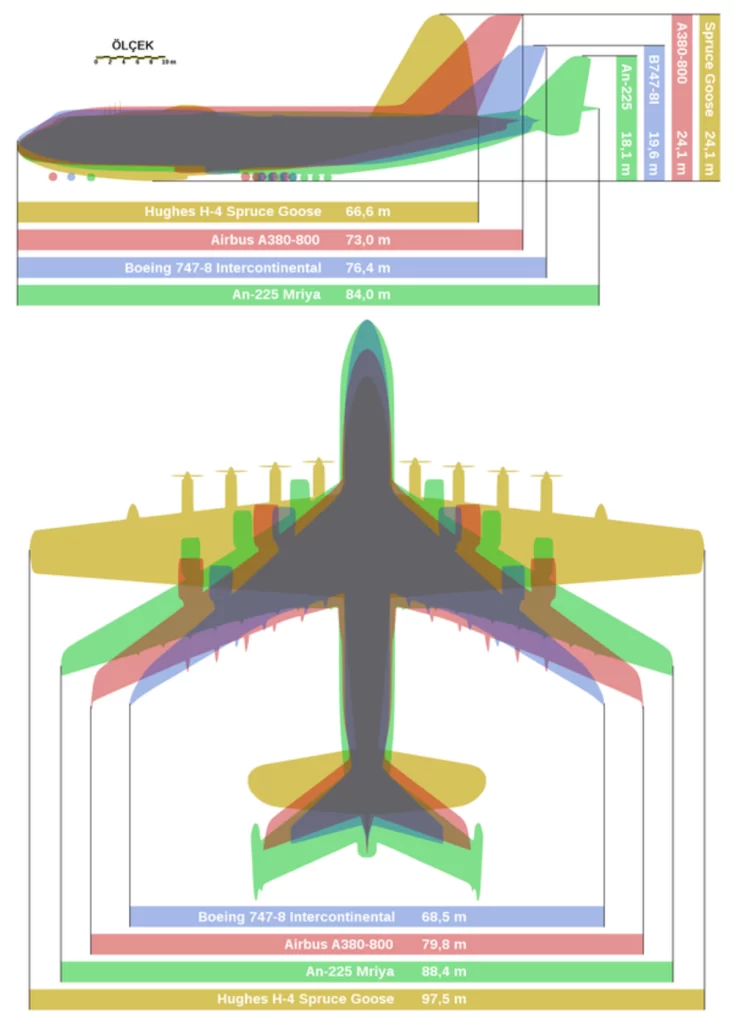There is much to consider when answering this question. I’ll attempt to cover some of the key considerations, but not all. Please let me know what think.
One of the chief determinants of what economic cruise speed of an aircraft will be like is the sweep of its aerofoils, particularly its wings. (One of many design considerations..)
At quarter chord, the Airbus A380 has a wing sweep of 33.5° . The Boeing 777 has a wing sweep of 31.6° , having been optimised for Mach 0.83 cruise, but found to be good at Mach 0.84 during its flight test campaign .
Optimised here means the entire design has been geared for a particular set of performance targets, and that includes trade studies between fuel economy, payload, the higher cruise numbers, and noise – both interior and exterior. That affects every aspect of the design; for example, the engine intakes need to be optimised for a specific Mach cruise range to deliver the most streamlined, subsonic air into the engine for best performance. Obviously, the A380 does achieve its balance with flying colours.
Swept Wings:
- This image compares the sweeps of the A380 and 747 wings. The A380 is capable of Mach 0.85 cruise, while the 747 will typically cruise at Mach 0.86.
- Wing sweeps of the 777 Classics, 777x, and A350. The A350 typically cruises at Mach 0.85 compared with 0.84 for the 777 Classics.
- Airbus wing sweeps
- Boeing wing sweeps.
Theory (more):
- Swept wings increase the distance air must travel, so delaying shockwave formation at higher Mach numbers. That is why wings are swept.
- Whitcomb’s Area Rule explains the need to keep a uniform cross-sectional area for improved performance at higher Mach numbers. The Boeing 747’s upper deck together with its aft tapering fuselage, and swept wings, with widely spaced engines, produced a design with very good compliance with Whitcomb’s Area Rule.
- The wing sweep of some of the largest aircraft is clearly seen in this infographic. The 747 has the greatest sweep in all aerofoils amongst the largest aircraft.
Engine Power:
You need power for higher Mach cruise, but not the most powerful engines necessarily. Even though the 777 has more powerful engines than the A380, the A380 has greater total thrust than the 777. Still, the A380 has greater total thrust than the 747, and the Jumbo Jet is still faster.
Consider that the 777–300ER has two GE90–115B turbofans each capable of slightly more than 115,000 lbs of thrust (230,000 lbs total), compared to Concorde with four Olympus 593 turbojets each capable of 31,000 lbs of thrust (124,000 lbs), or 38,050 lbs (152,200 lbs total) with relight. At Mach 2.0+ flight, Concorde did not require relight; this is called supercruise capability. Of course, the 777–300ER is a much larger aircraft than Concorde. So Concorde has higher power to weight ratio than the 777 – 0.304 to 0.373 vs 0.298. Note here that in supercruise, Concorde is only slightly ahead of the 777 in power to weight ratio. Yet, because of ETOPS rules – and single engine takeoff performance – the 777 has superior power to weight ratio compared to the A380 at 0.253.
Author – Paulo Martins






